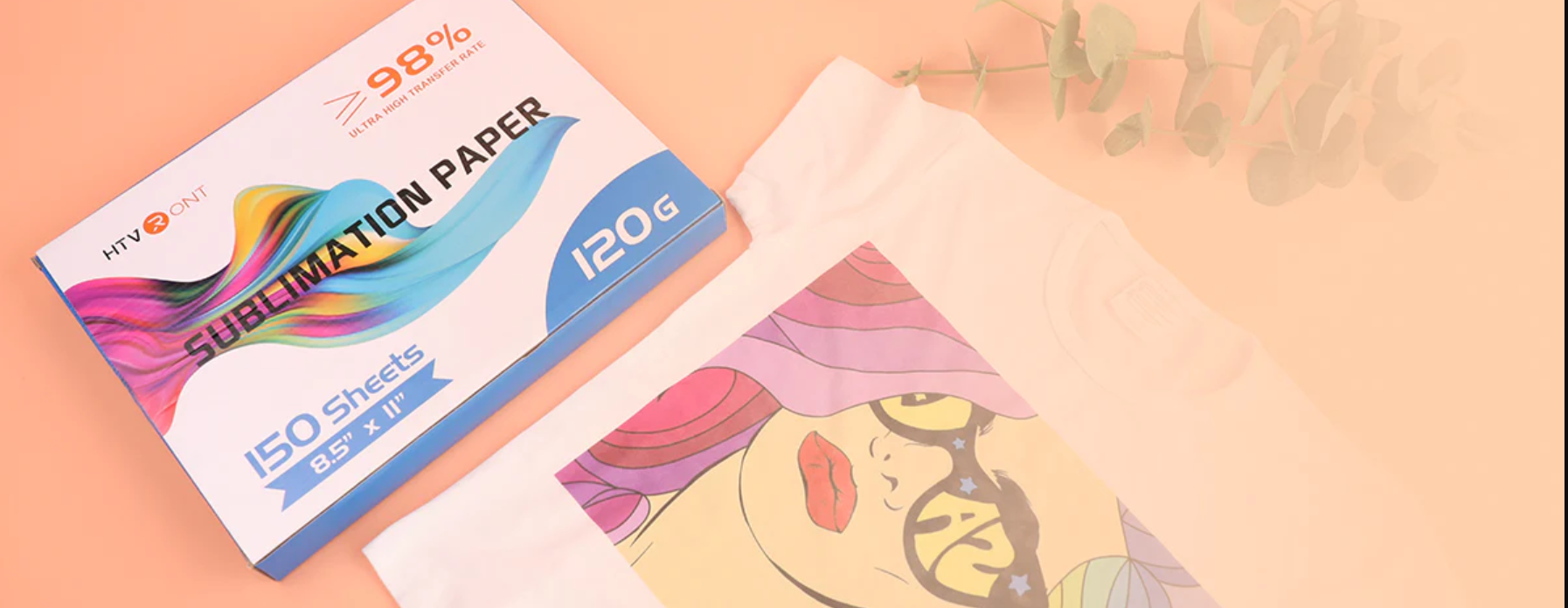Sublimation paper is a versatile printing medium that can be used in a variety of applications. In this article, we’ll take a closer look at what sublimation printer paper is, how it works, and some of the benefits that you can expect to receive from using it. So read on to learn more about this exciting printing technology!
What is Sublimation Paper?
Sublimation paper is a special type of printer paper that has been specifically designed to work with sublimation printers. Sublimation printer paper is made of a high-quality material that is resistant to tear, abrasion and water damage. Vinyl Sticker Paper is also a great option!
The printing process uses a heat gun to transfer dye from the image onto the sublimation printer paper. The dye reacts with the air in the room to create an image that can be seen when the paper is used.
Types of Sublimation Printer Paper
There are a few types of sublimation printer paper that can be used with a sublimation printer. The most popular types of sublimation printer paper are thermal transfer paper and direct thermal paper.
Thermal transfer paper is the most common type of sublimation printer paper. This type of printer paper uses heat to transfer images from the printing plate to the sublimation film. This type of printer is best for printing high-resolution images that require accurate colour reproduction.
Direct thermal paper is similar to thermal transfer paper, but it uses heat instead of ink to transfer images from the printing plate to the sublimation film. This type of printer is best for printing low-resolution images that do not require accurate colour reproduction.
Regardless of the type of sublimation printer paper you choose, make sure to use the correct size sheet for your printer. Each type of sheet has its own required dimensions and specifications. If in doubt, consult your printer’s user manual or contact the manufacturer for support.
How Does Sublimation Printer Paper Work?
Sublimation printer paper is most commonly used in digital photography and graphic design applications. It is also becoming increasingly popular among small businesses and entrepreneurs who want to create high-quality, personalised products without having to spend a lot of money on Printing Services.
There are a few things you need to know in order to use sublimation printer paper successfully. First, you need to have a compatible printer. Second, you will need to purchase or borrow some sublimation printer paper from your local print shop or online retailer. Third, you will need to set up your printer so that it can print on sublimation printer paper. Fourth, you will need some images or designs that you would like to print on sublimation printer paper. Finally, you will need to prepare the images or designs for printing by converting them into PDF files or other formats that can be printed using sublimation printer paper.
Benefits of Using Sublimation Printer Paper
There are many benefits to using sublimation printer paper, including lower printing costs and the ability to produce high-quality prints without the use of ink.
Sublimation printer paper is made up of a number of different materials, including polyester and polyamide. These materials heat up and transform when they come into contact with an image, which in turn creates a print that is permanently resistant to fading or smudging.
Because sublimation printer paper is made up of multiple materials, it can produce prints that are both durable and lightweight. Because these prints are printed on a special type of paper, they can also be used for a wide range of purposes, including advertising and marketing materials.
Conclusion
If you’re looking for a way to add a bit of extra flair and pizzazz to your projects, then you should consider using sublimation printer paper. This type of paper is heat sensitive, which means that when it’s heated up to the right temperature, it turns into a solid sheet of plastic. This allows you to create designs on top of your prints that can be very noticeable and eye-catching.

